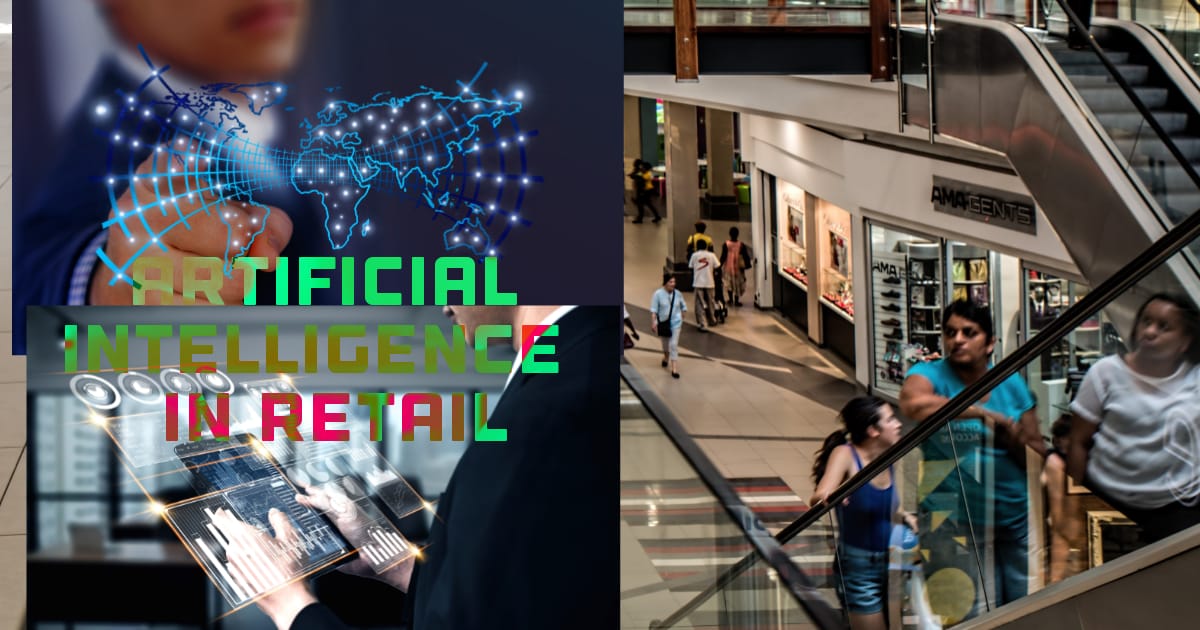Artificial Intelligence (AI) is reshaping industries worldwide, and the retail sector in the United States is no exception. As American businesses strive to meet the ever-evolving demands of consumers, AI is emerging as a key driver of innovation and efficiency. From personalized shopping experiences to optimized supply chains, AI is transforming retail in ways that were once unimaginable. In this blog post, we’ll explore how AI is changing the retail landscape in the U.S., the trends that are shaping the industry, and predictions for the future.
1. Personalized Shopping Experiences: Meeting Consumer Expectations
Today’s consumers expect personalized experiences when they shop, whether online or in-store. AI is helping retailers meet these expectations by analyzing vast amounts of customer data to offer tailored product recommendations, targeted marketing, and customized shopping experiences.
For example, AI algorithms can track a customer’s browsing and purchasing history to suggest products they’re likely to be interested in. This level of personalization extends to email marketing, where AI can craft personalized messages and promotions based on individual shopping behavior. American retail giants like Amazon and Walmart are leading the way in this area, using AI to create more engaging and relevant shopping experiences for their customers.
2. AI-Driven Inventory Management: Reducing Waste and Increasing Efficiency
Effective inventory management is crucial for retail businesses, but it’s a complex task that involves balancing supply and demand while minimizing waste. AI is transforming inventory management by providing real-time insights and predictive analytics that help retailers optimize their stock levels.
AI-powered systems can analyze sales data, seasonal trends, and even external factors like weather patterns to predict demand with greater accuracy. This allows retailers to stock the right products at the right time, reducing the likelihood of overstocking or stockouts. For American businesses, AI-driven inventory management translates into cost savings, reduced waste, and a more efficient supply chain.
3. Enhancing Customer Service with AI-Powered Chatbots
Customer service is a critical component of the retail experience, and AI is playing an increasingly important role in this area. AI-powered chatbots are becoming a common feature on retail websites, providing instant support to customers and handling routine inquiries.
These chatbots can assist with everything from tracking orders to answering product-related questions, freeing up human customer service representatives to focus on more complex issues. In the U.S., where the retail industry is highly competitive, AI-powered customer service tools are helping businesses deliver faster, more efficient service, ultimately leading to higher customer satisfaction.
4. Visual Search and AI: Revolutionizing How We Shop Online
Visual search is an emerging trend in the retail industry that is gaining traction thanks to AI. Unlike traditional text-based searches, visual search allows customers to upload images or take photos of products they’re interested in, and AI algorithms find similar items across online stores.
This technology is particularly popular in the fashion and home decor sectors, where visual appeal is a key factor in purchasing decisions. Retailers like Target and Home Depot are already leveraging AI-powered visual search to enhance the online shopping experience. For American businesses, adopting visual search technology means staying ahead of the curve and offering customers a more intuitive and engaging way to shop online.
5. AI in Supply Chain Optimization: Enhancing Logistics and Delivery
The supply chain is the backbone of the retail industry, and AI is revolutionizing how it operates. AI-driven supply chain optimization involves using advanced algorithms to predict demand, manage logistics, and ensure timely delivery of products.
For example, AI can analyze traffic patterns, weather conditions, and other factors to determine the most efficient delivery routes, reducing shipping times and costs. In the U.S., where consumers increasingly expect fast and reliable delivery, AI is helping retailers meet these demands while improving operational efficiency. By optimizing their supply chains with AI, American businesses can stay competitive in a fast-paced market.
6. Retail Analytics and AI: Driving Informed Business Decisions
Data is a powerful asset in the retail industry, and AI is making it easier for businesses to harness this data to drive informed decisions. AI-powered retail analytics tools can process large volumes of data, uncovering trends and insights that would be impossible to detect manually.
For example, AI can analyze customer feedback, sales data, and market trends to identify opportunities for growth or areas that need improvement. Retailers can use these insights to refine their marketing strategies, optimize pricing, and enhance the overall customer experience. In a competitive U.S. market, data-driven decision-making powered by AI gives businesses a significant edge.
7. Ethical Considerations and Challenges
While AI offers numerous benefits to the retail industry, it also raises important ethical considerations and challenges. One of the primary concerns is data privacy. As retailers collect more customer data to fuel AI-driven personalization, they must ensure that this data is handled responsibly and transparently.
Moreover, the increasing reliance on AI in retail raises questions about the potential for job displacement. As AI automates more tasks, it’s essential for businesses to consider how they can retrain and upskill their workforce to adapt to these changes. For American businesses, balancing the benefits of AI with ethical considerations will be crucial to maintaining consumer trust and ensuring long-term success.
8. Predictions for the Future of AI in Retail
The future of AI in retail is bright, with new innovations and applications on the horizon. As AI technologies continue to advance, we can expect even more personalized shopping experiences, greater supply chain efficiency, and enhanced customer service.
One exciting area of development is the use of AI in augmented reality (AR) shopping experiences. Imagine being able to try on clothes virtually or see how a piece of furniture would look in your home before making a purchase. These AI-driven AR experiences are likely to become more widespread in the coming years, offering consumers a more immersive and interactive way to shop.
Another prediction is the rise of AI-powered voice shopping. As voice-activated assistants like Amazon’s Alexa and Google Assistant become more sophisticated, we can expect more consumers to use voice commands to shop online. Retailers that adapt to this trend early will be well-positioned to capture a growing segment of the market.
Conclusion
AI is undeniably transforming the retail industry in the United States, offering businesses new ways to enhance efficiency, improve customer experiences, and stay competitive in a rapidly changing market. From personalized shopping and inventory management to visual search and supply chain optimization, AI is driving innovation at every level of the retail experience.
As American businesses continue to embrace AI, the potential for growth and success is immense. However, it’s important for retailers to navigate these changes thoughtfully, considering the ethical implications and challenges that come with AI adoption. By doing so, they can harness the full potential of AI to create a brighter future for the retail industry.





